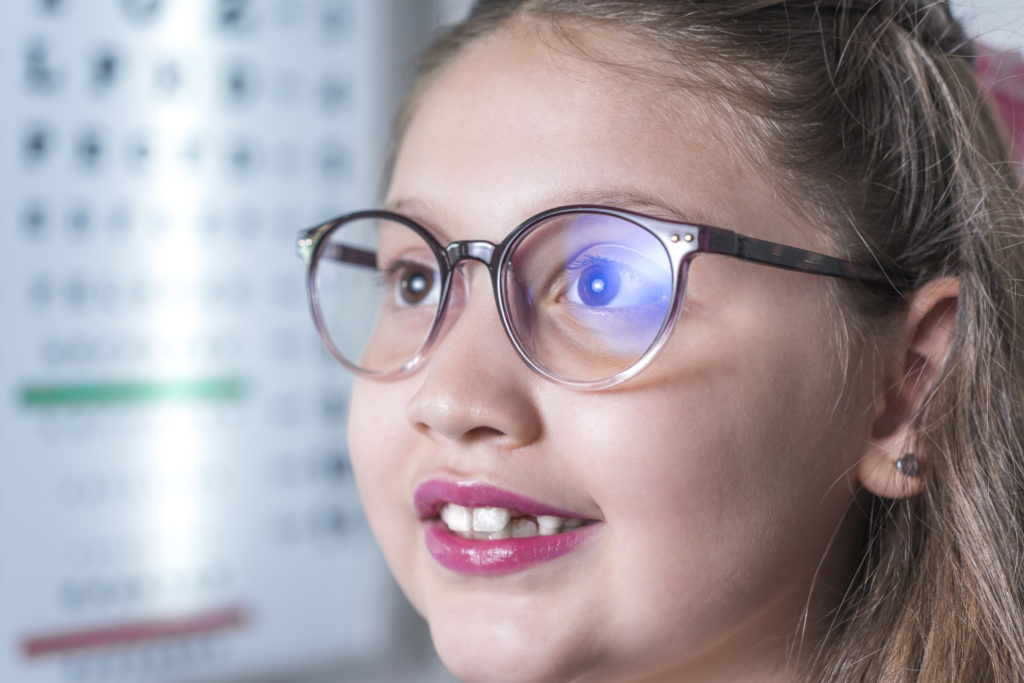Eye Care: Limit screen time in children
By: Diana Bello Aristizábal
Do you know how many hours a day your children spend in front of a screen? Are you aware of how close to their eyes they place their devices while in use? These are questions that any parent should ask themselves as eye problems continue to increase in children, mainly due to bad habits in screen usage.
“Eyes weren’t made to spend long hours in front of a screen,” says Nicklaus Children’s Hospital Pediatric Ophthalmologist, Dr. Luxme Hariharan. However, since 2020, when virtual learning began, children have gone from spending a few hours a day playing or learning through electronic devices to being fully immersed in the digital world.
 Today, two years after the pandemic hit the world, we are just witnessing the consequences of this dynamic that continue to be present in many families despite the fact that the majority of minors in the United States have returned to classrooms.
Today, two years after the pandemic hit the world, we are just witnessing the consequences of this dynamic that continue to be present in many families despite the fact that the majority of minors in the United States have returned to classrooms.
“Since the pandemic, we are seeing more and more cases of eye strain and myopia or nearsightedness. On average, I see now 20 percent more children in my practice who require glasses,” says the Ophthalmologist.
People with this condition, who can see clearly up close but blurry farther away, usually have a number of symptoms that are important to recognize early.
In the first place, the fact that the minor’s parents had glasses during childhood or that their siblings currently wear them are both considered risk factors. “In these cases, it is recommended to get a check-up to verify there aren’t visual problems since myopia can be genetic,” says Dr. Hariharan.
On the other hand, it is wise to visit the doctor if a child holds objects very close to his eyes or squints to see, walks towards the TV to watch better, suffers from headaches, blinks more than normal, or has strabismus, a disorder in which the eyes don’t look in exactly the same direction at the same time.
Another sign that could warn of a possible eye condition, although not necessarily, is constantly having red eyes. “Any symptom considered out of the ordinary should be reason enough for consultation since 80 percent of learning is acquired through the eyes. It should be noted that “Dr. Google” is not a reliable source.”
It is because of the relevance of sight in school education that many children begin to show poor behavior or lower academic achievement when they don’t see well and then noticeably improve when they start wearing glasses.
Taking all this into consideration, in addition to visiting the Ophthalmologist, parents can follow some tips at home to counteract the harmful effects of screens.
A break-in time can make a difference
When it comes to taking care of children’s eyesight, it is best to limit screen time to no more than 1 hour a day. However, since this goal is sometimes hard to achieve, the American Academy of Ophthalmology and the American Association for Pediatric Ophthalmology recommend following the 20-20-20 rule.
This consists of taking a pause every 20 minutes to be at least 20 feet away from electronic devices and blink for 20 seconds. In this way, the eyes can rest and readjust.
 Additionally, Dr. Hariharan suggests adopting the 5-step strategy called BLINK. The B refers to increasing blinking so that the eyes can naturally lubricate themselves and thus there is greater clarity in vision. “Normally we blink 25 to 30 times a minute but when we’re in front of a screen, we blink 5 to 7 times per minute.”
Additionally, Dr. Hariharan suggests adopting the 5-step strategy called BLINK. The B refers to increasing blinking so that the eyes can naturally lubricate themselves and thus there is greater clarity in vision. “Normally we blink 25 to 30 times a minute but when we’re in front of a screen, we blink 5 to 7 times per minute.”
Precisely the L stands for lubricating the eyes with artificial tears during the day or to use an artificial tear ointment at night, which can be very useful to prevent dry eyes.
The I, on the other hand, refers to placing electronic devices at least 25 inches of arms lenght away from children, while the N stands for taking near device breaks to engage in outdoor activities. Lastly, the K (know your sources) suggests only following reliable sources of information when it comes to learning how to protect the eyes, such as the American Academy of Ophthalmology.
Other strategies include ensuring children adopt a balanced diet with plenty of vegetables, maintaining a healthy weight, and getting regular eye screenings.
When children require glasses, the recommendation is to involve them in the selection of frames. “We have to make this a fun experience for them. Parents can ask them to choose the color and style of their choice,” Dr. Hariharan suggests.
Another suggestion is to take animated characters who wear glasses as a point of reference to encourage them to follow their example like Mirabel from the movie Encanto. “The goal is to help them associate the use of glasses with things they like and that they realize glasses can assist with their favorite activities.”
It should be noted that when a child wears the proper eyeglass prescription at an early age, they can eventually return to normal vision. “The most important thing is that the prescription is fit correctly so that the child always has a 20/20 vision with the glasses on,” she emphasizes.


Pingback: Eye care: limit screen time in kids - Moeara News
Great